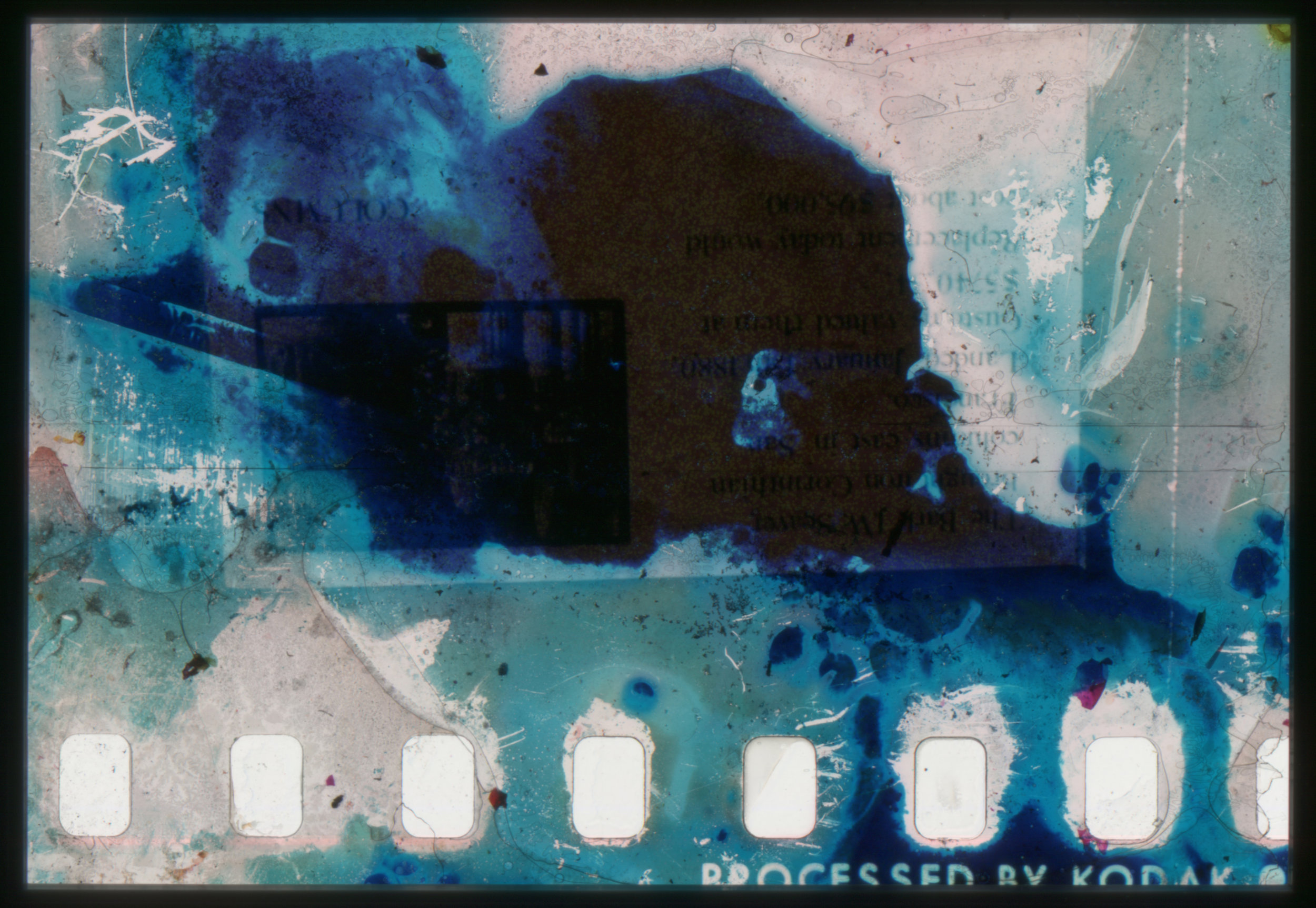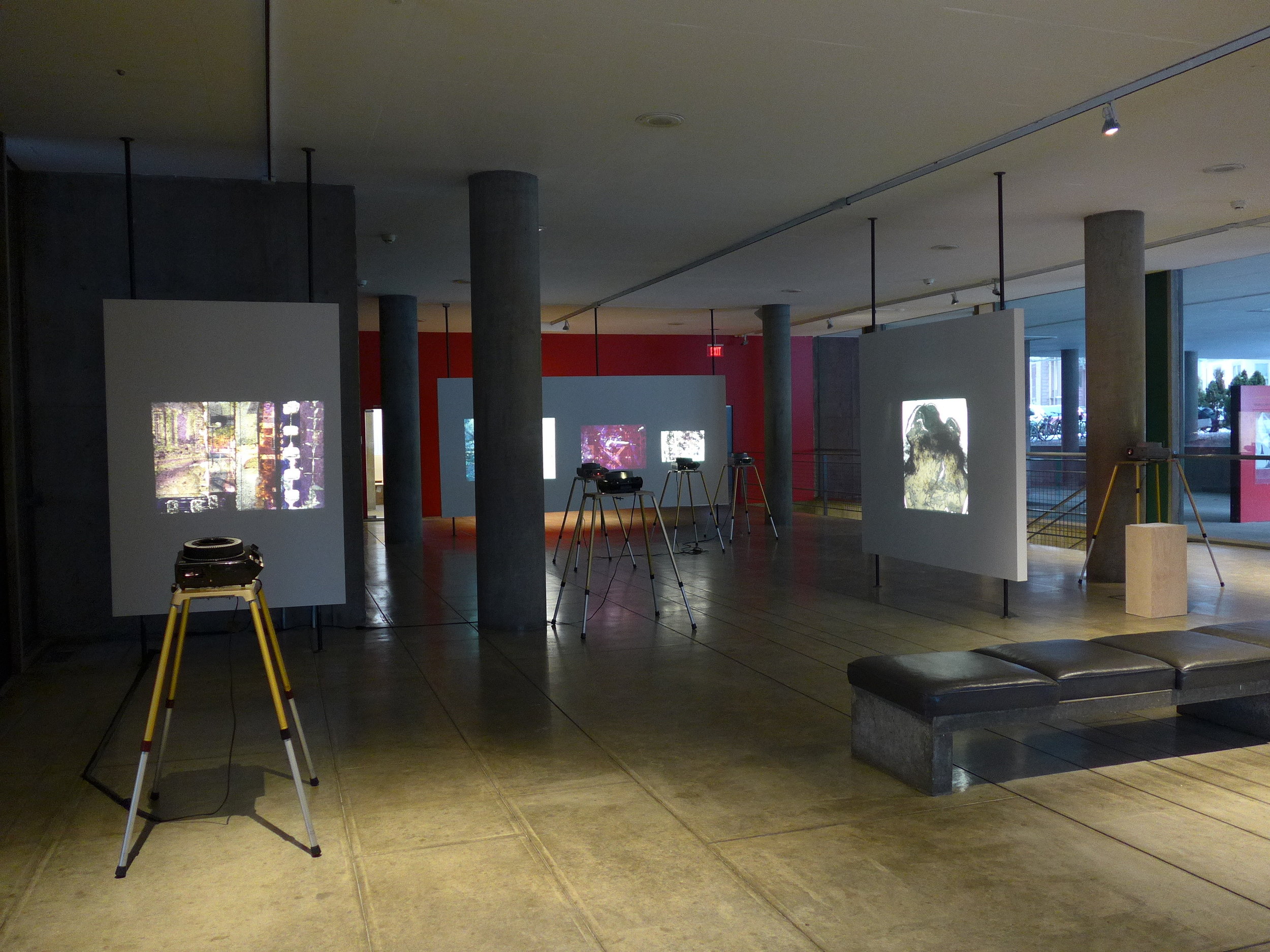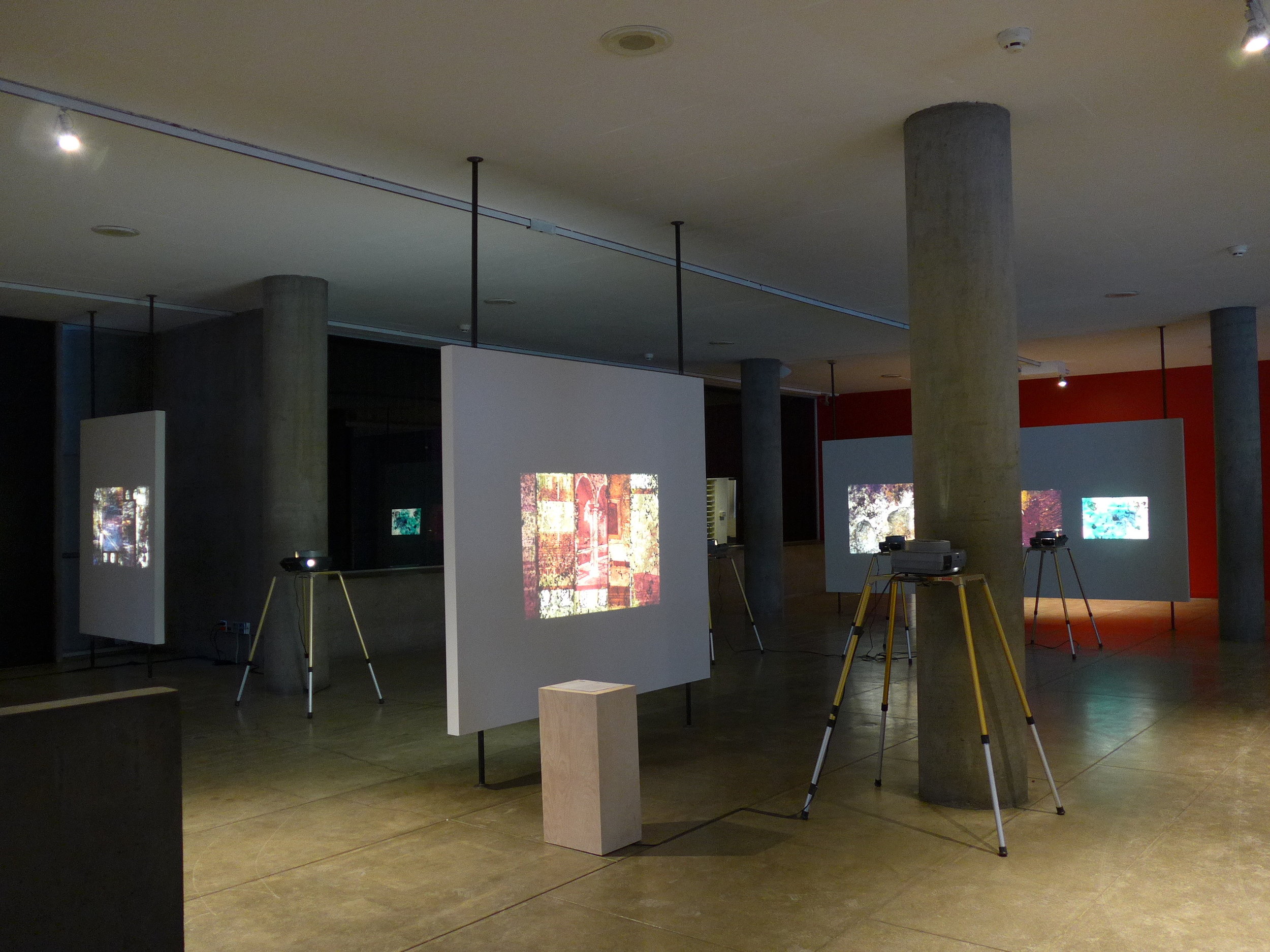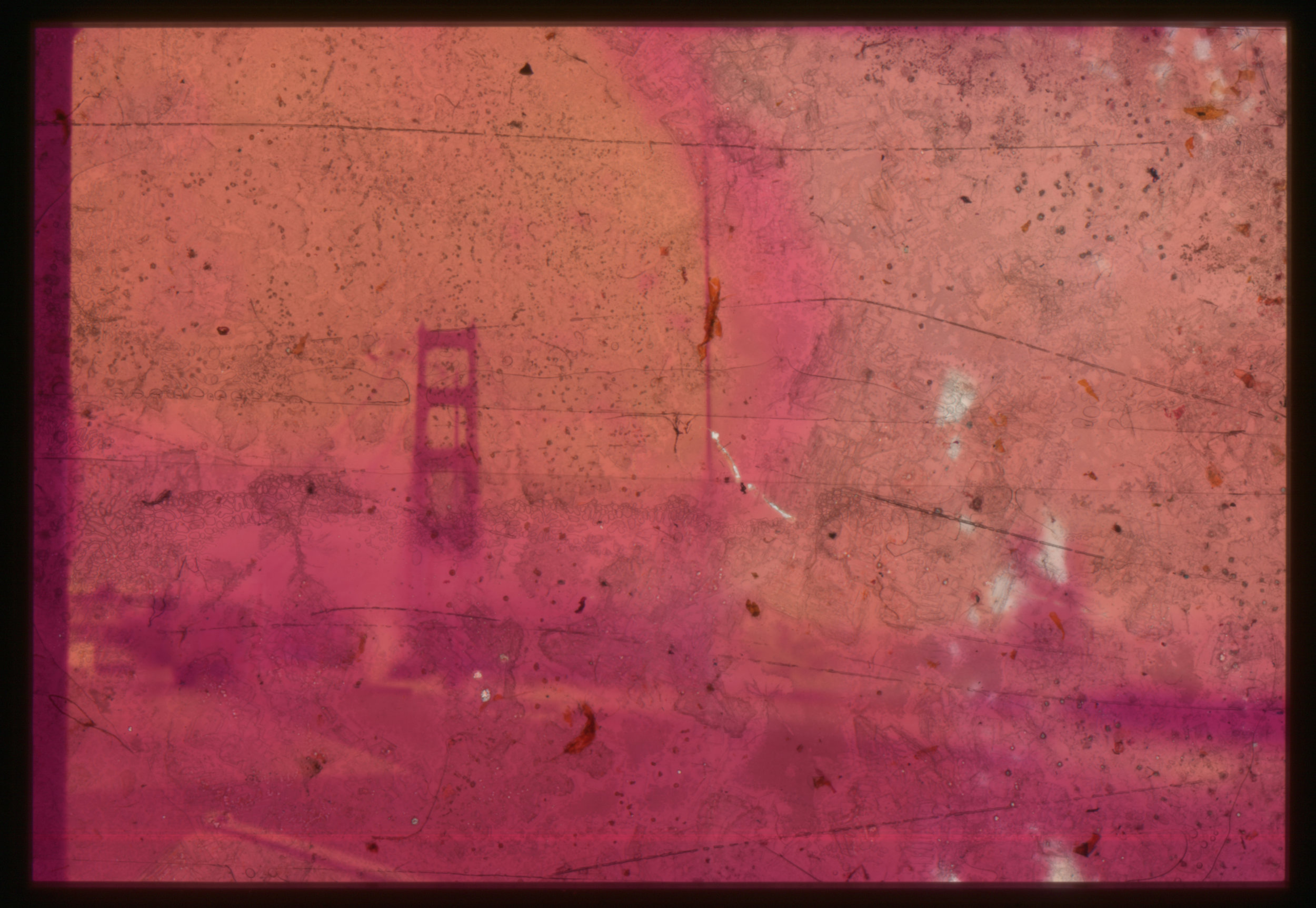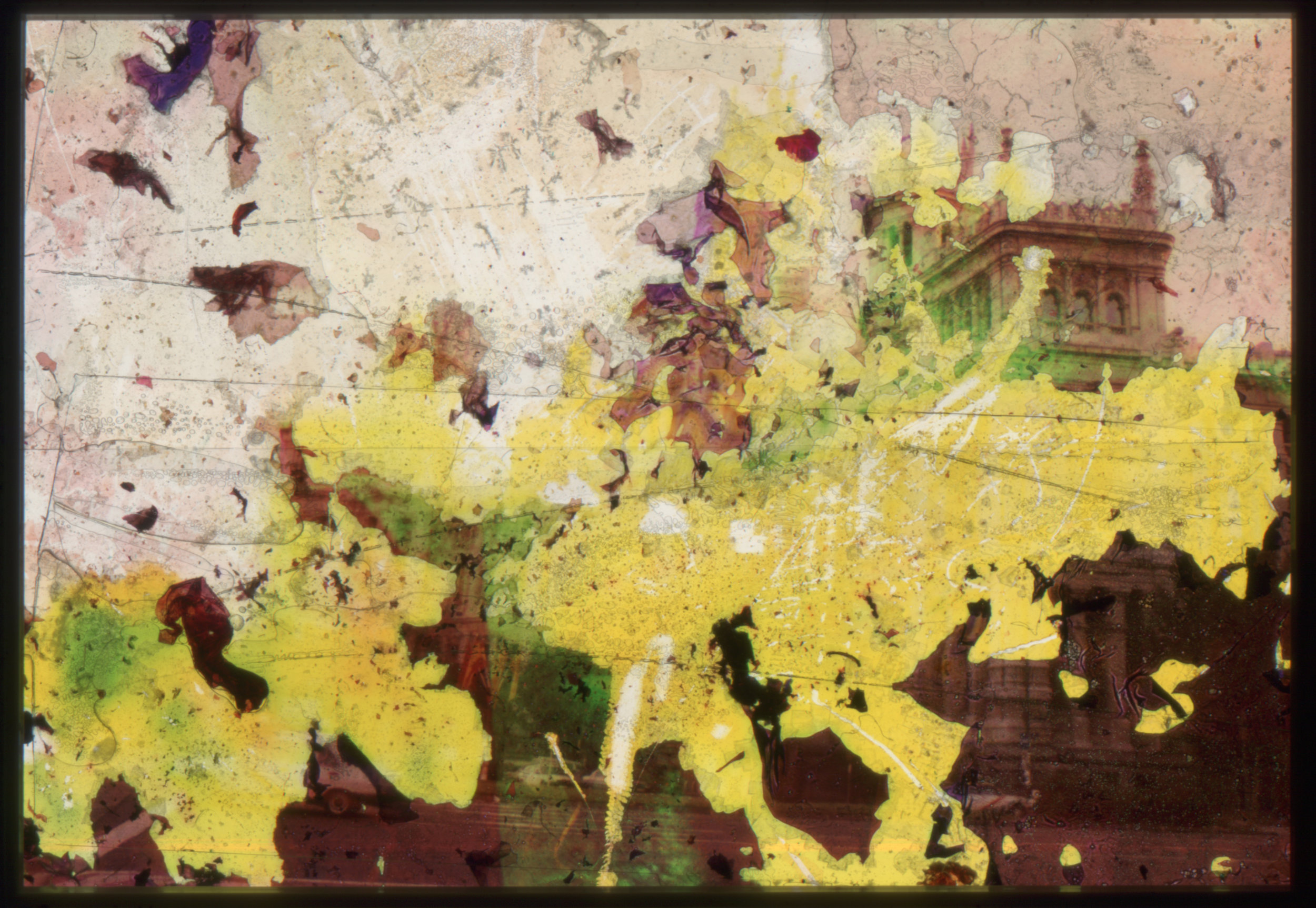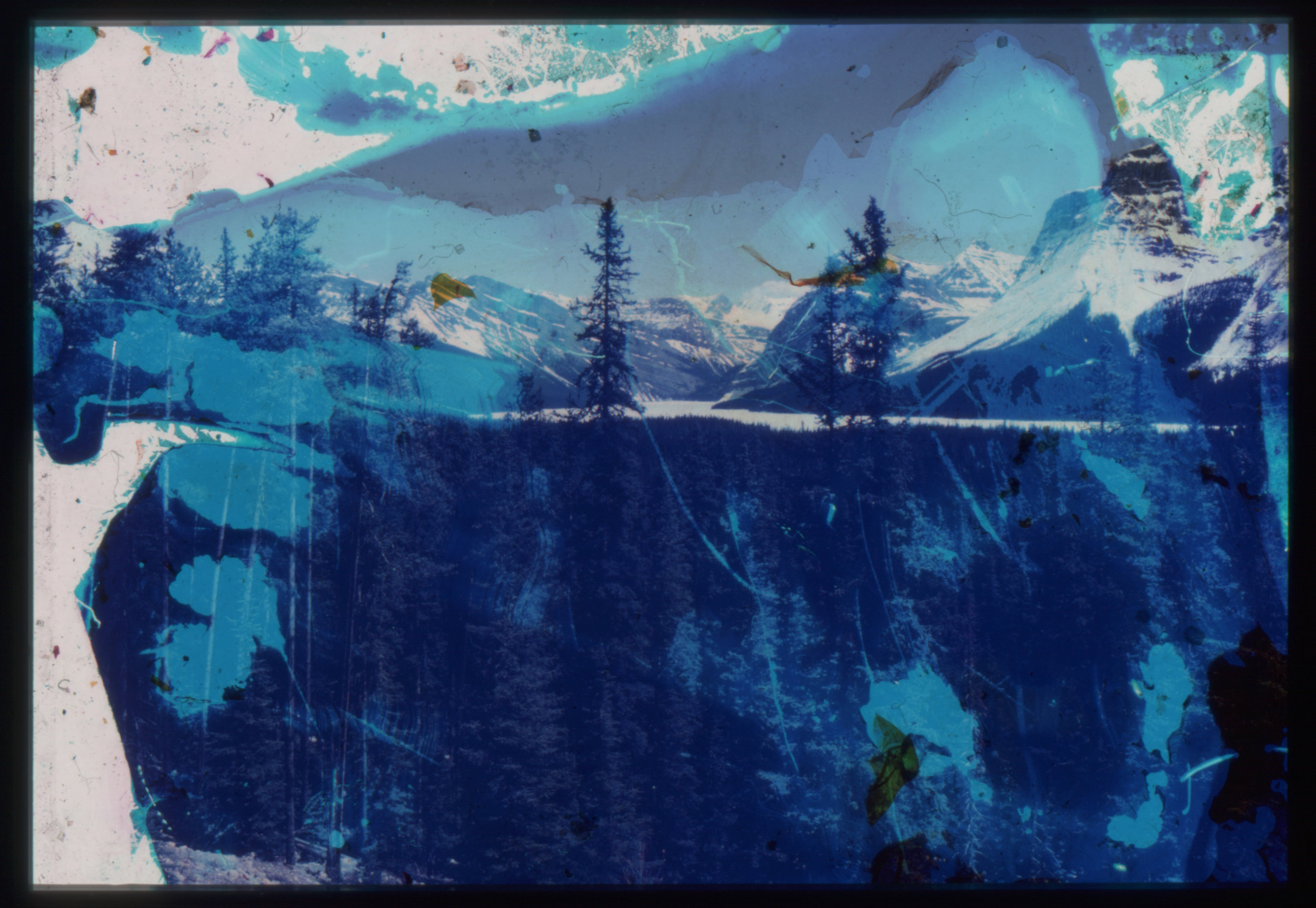Luther Price: Light Windows

An exhibition of six 35mm slide projectors—each with a carousel of 80 handmade slides by Luther Price of—presented on vertical panels.
Curated by James Voorhies
Carpenter Center for the Visual Arts
Harvard University, Cambridge, MA
January 26–February 1, 2015
Made possible with funding and staff of Harvard University’s Carpenter Center for the Visual Arts with support by the Harvard Film Archive; realized within my responsibilities as Director and Curator of the Carpenter Center for the Visual Arts
As a filmmaker, the late Luther Price salvaged film footage from discarded prints of old documentaries, Hollywood classics, home movies, how-to reels, and pornography to cut, alter, and reassemble into handmade films. His process often involved physically and chemically manipulating the filmstrip surface by painting, burying, applying ink, or effacing it with scratches and scrapes. The resulting films were unique objects, and when combined with light the projections become highly charged visual imagery, transforming 8mm, 16mm, and 35mm found film into unforgettable cinematic experiences.
When this exhibition—Light Windows—was made Price had began to turn his attention to creating 35mm slides from discarded film stock. He applied the same labor-intensive technical processes used for his projected film works. Comparable to the unique qualities each frame possesses in his films, the slides, too, were discrete works compiled from a range of materials, including found images, patterns, dirt, mold, insects, inkblots, and stains of various colors. He used the standard window of the 35mm slide to arrange and crop his materials.
The exhibition Light Windows consisted of six 35mm slide projectors, each with a carousel of 80 handmade slides from his ongoing series Light Fractures projected onto vertical panels installed throughout the gallery on Level 1 of the Carpenter Center. The multiscreen visual and aural kaleidoscopic installation transformed the site into an expanded cinematic space where spectators became immersed among projectors responsible for both the illuminated images and the whirring soundscape of simultaneously rotating trays.
Luther Price: Light Windows was part of something I called “The Interstitial,” a program that took advantage of the time and physical space between exhibitions. The Interstitial hosted a number of performances, installations, and time-based events that could transpire over the course of an evening or several days dependent on different circumstances.
...
